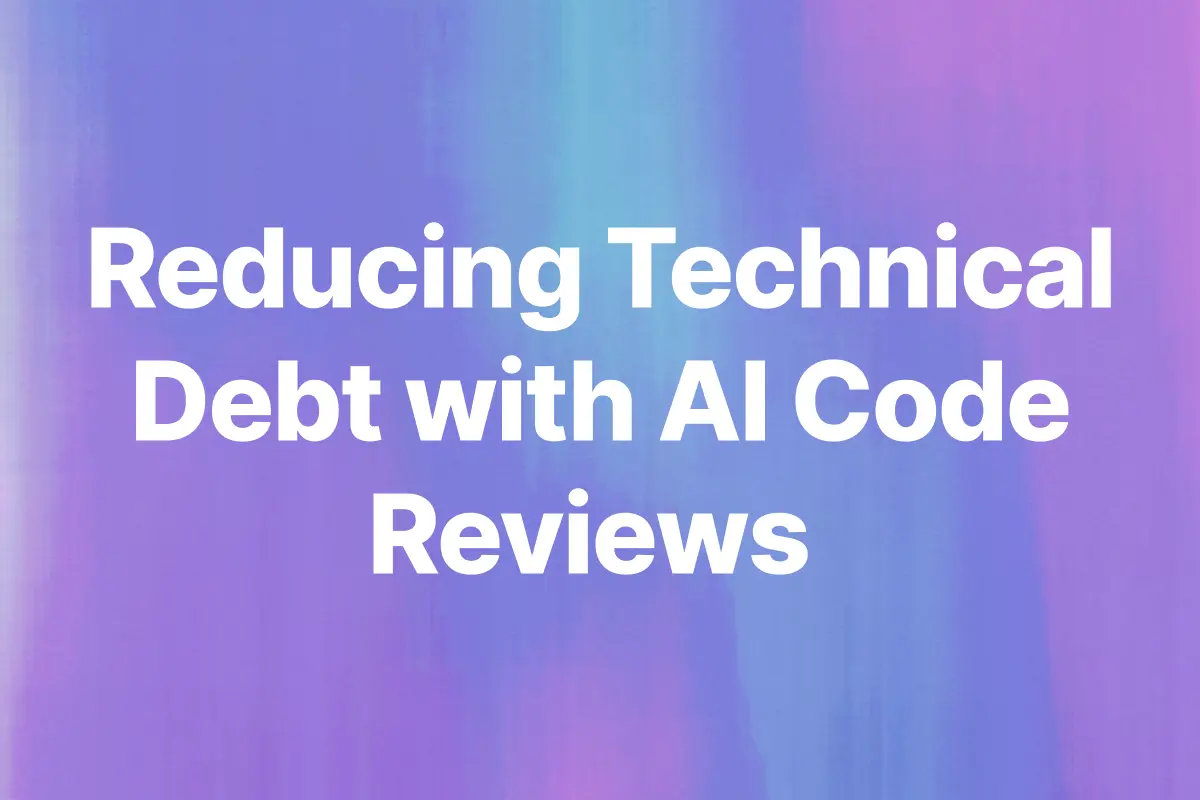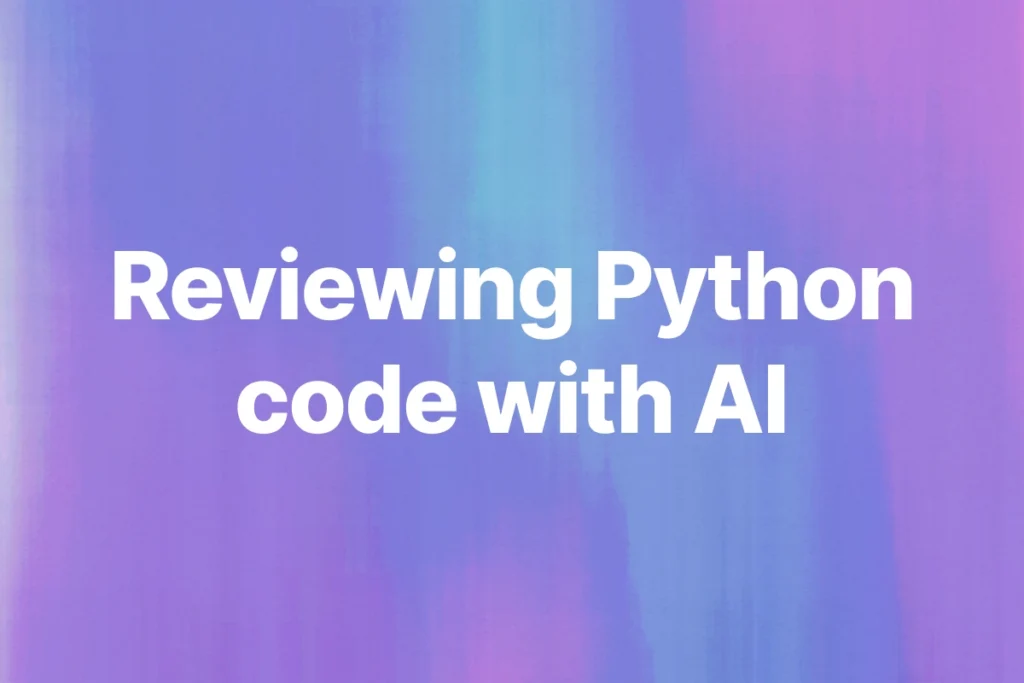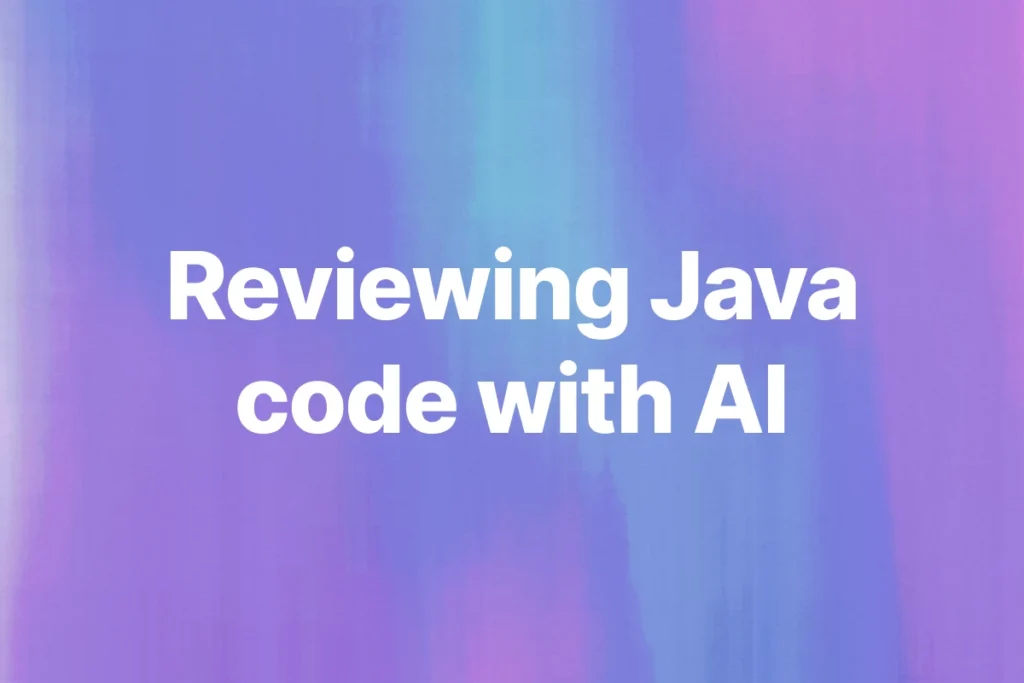Every developer has some technical debt. It happens when you take shortcuts to ship faster. The code works, but you know it will need cleanup later. Then later never comes.
Soon the code gets harder to read, harder to test, and slower to change. Teams start avoiding certain files because touching them breaks something else. Across a company, that adds up. New developers take longer to get onboarded, reviews slow down, and releases slip.
One way to manage technical debt before it grows out of control is through AI code reviews. They catch weak spots early, suggest cleaner fixes, and help teams maintain consistent quality across projects.
What is technical debt
Technical debt is the cost of writing code that works today but makes things harder tomorrow. It happens when teams cut corners to ship faster.
Maybe you skipped a test, left a TODO, or pushed a quick fix you meant to revisit. The code still works, but every shortcut adds interest that you eventually have to pay back.
Where it comes from
Technical debt shows up in many ways.
- Old dependencies that nobody updates.
- Duplicate logic scattered across files.
- Quick fixes that never get cleaned up.
- Missing tests or documentation.
- Complex functions that no one wants to touch.
Each small decision feels harmless, but together they slow everything down. Build times get longer. Merges take more effort. Even simple changes start breaking other parts of the system.
Why it matters for teams
Technical debt hurts more than just the codebase. It slows down the whole team. New developers need extra time to understand messy code, reviews take longer. Product timelines stretch because the system is harder to change safely.
You can’t avoid technical debt completely, but you can manage it. Regular refactoring, better review practices, and AI code quality tools help keep it under control.
A good automated code review system finds weak patterns early and helps you maintain clean code as your project grows.
If you want to know why I talk about automated code review system and not manual, check out Manual vs Automated Code Review.
Managing and measuring technical debt
Managing technical debt starts with making it visible. Track known issues in your backlog and mark them as debt items. Add small refactor tickets in every sprint so the cleanup work never gets ignored.
Managing debt in real workflows
Start by treating technical debt as part of development, not as a side project. If a class keeps breaking tests, or a function is too long to reason about, that’s debt. Tag it, discuss it, and fix it when you touch that area again.
The easiest way to manage it is through AI-powered code review that spots risky patterns automatically.
For example, a long, repetitive block like this:
if (userType.equals("admin")) {
sendAdminReport();
} else if (userType.equals("manager")) {
sendManagerReport();
} else if (userType.equals("staff")) {
sendStaffReport();
}
is a sign of technical debt. It works, but it’s fragile and hard to extend.
AI review tools will flag it for low maintainability and suggest cleaner design patterns like Map<String, Runnable> dispatching or polymorphism. This is how you reduce debt while you work, not during a cleanup sprint.
Measuring technical debt
You can’t manage what you can’t measure. Use metrics that reflect code health, not just coverage.
- Cyclomatic complexity for understanding logic depth.
- Duplication ratio for spotting repeated logic.
- Code churn for identifying unstable modules.
- AI code quality scores from tools like Bito for trend tracking.
These help you see whether your codebase is getting cleaner or messier. Over time, fewer warnings and smaller diffs in automated code reviews mean you’re reducing debt, not adding more.
For a deeper look at how Bito’s automated code reviews perform against other options, see Benchmarking the Best AI Code Review Tool.
How to reduce technical debt
There are many ways to reduce technical debt, but the most effective approach is to make it part of your daily workflow. You do not need a full rewrite or a special cleanup project. You need a consistent process that stops new debt from creeping in while you fix old problems.
1. Refactor continuously
Small, regular cleanups are better than large refactors that never happen. When you touch a file, leave it slightly better than you found it. Rename unclear variables, remove unused imports, simplify long methods, and extract repeated logic. This keeps the codebase stable while you ship.
2. Improve code readability and structure
Readable code is maintainable code. Avoid deeply nested conditionals and long parameter lists. Split complex functions into smaller, focused methods. A short example:
// before
if (order != null && order.getUser() != null && order.getUser().isActive()) {
process(order);
}
// after
if (isProcessable(order)) {
process(order);
}
Cleaner structure improves understanding and reduces future bugs.
3. Write and maintain tests
Tests act as a safety net for refactoring. Without them, teams hesitate to change old code. Even a small suite covering core logic helps control regression and supports maintainability.
4. Use AI-powered code reviews
This is where the real change happens. AI code review systems catch repetitive patterns, unnecessary complexity, and poor naming before they land in your main branch. They act as continuous feedback loops that prevent new debt from forming.
Unlike static linters, AI reviews understand context. They can point out when a method violates clean code principles, when a design is too tightly coupled, or when logic should be simplified.
Over time, these reviews build consistency and reduce rework across the codebase. When your team adopts AI code quality checks as part of every pull request, technical debt stops being an afterthought.
It becomes something the system manages automatically, while developers focus on solving real problems.
For a closer look at how Bito’s AI Review Agent fits into this process, check 10 Reasons to Try Bito’s AI Code Review Agent.
Conclusion
You can’t erase technical debt, but you can control it. The key is to make debt management part of how your team writes and reviews code every day.
Start small. Refactor when you touch old files. Track debt items in your backlog. Keep tests current. Most importantly, run AI-powered code reviews on every pull request. They catch complexity, duplication, and poor structure before they merge into main.
Tools like Bito’s AI Code Review Agent turn that into a habit. They give consistent feedback, help you maintain clean code, and make technical debt visible before it becomes a problem.
That’s how you reduce debt in real life: one PR, one review, one cleaner commit at a time.






